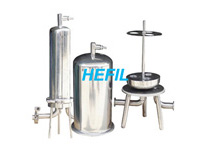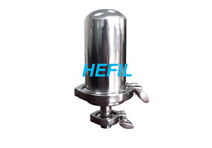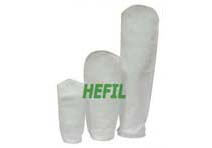Carbon Filter is widely used in many areas in modern society. It can purify contaminations of small sizes that our eyes can't see in the air or water. What is an amazing thing! This makes us wonder how it works. The lucky thing is today I'm going to share the knowledge of the carbon filter working principle with you.
Speaking of carbon filter working principle, we have to know activated carbon firstly. Activated Carbon (AC) is a form of carbon processed to have small, low-volume pores that increase the surface area available for adsorption or chemical reactions. Due to its high degree of micro porosity, just one gram of activated carbon has a surface area in excess of 500 m2 as Wikipedia said. Activated carbon is widely used in gas purification, gold purification, metal extraction, water purification, medicine, sewage treatment, air filters in gas masks and respirators, filters in compressed air and many other applications. Activated carbon quality varies enormously. There are cheap and expensive products on sale all claiming to work wonders.
How does activated carbon works in carbon filter? Now let's learn the Carbon filter product working principle. The activated carbon in the surface of the particles forms a layer of balance surface concentration and then absorbs the organic material into active carbon. It can ensure its high adsorption effect at the early stage. But the active carbon adsorption ability will abate subsequently, so is the adsorption effect. If the water quality in aquatic box is cloudy and the organic matter content in water is high, activated carbon will soon lose filter function. So, activated carbon should be regularly clean or replace. The main function of Activated Carbon Filter is to remove macromolecular organic matters, iron oxide and residual chlorine. This is because organic matter, residual chlorine and iron oxide can easily make ion exchange resin poisoning. Residual chlorine and cationic surfactants, not only can make resin poisoning, but also destroy membrane structure, make reverse osmosis membrane failure. Several factors influence the effectiveness of activated charcoal. The pore size and distribution varies depending on the source of the carbon and the manufacturing process. Large organic molecules are absorbed better than smaller ones. Adsorption tends to increase as pH and temperature decrease. Contaminants are also removed more effectively if they are in contact with the activated charcoal for a longer time, so flow rate through the charcoal affects filtration.
After learning this information as stated above, you must know the carbon filter working principle now. If you are in need of carbon filter, you can visit www.hefilter.com for more information.





